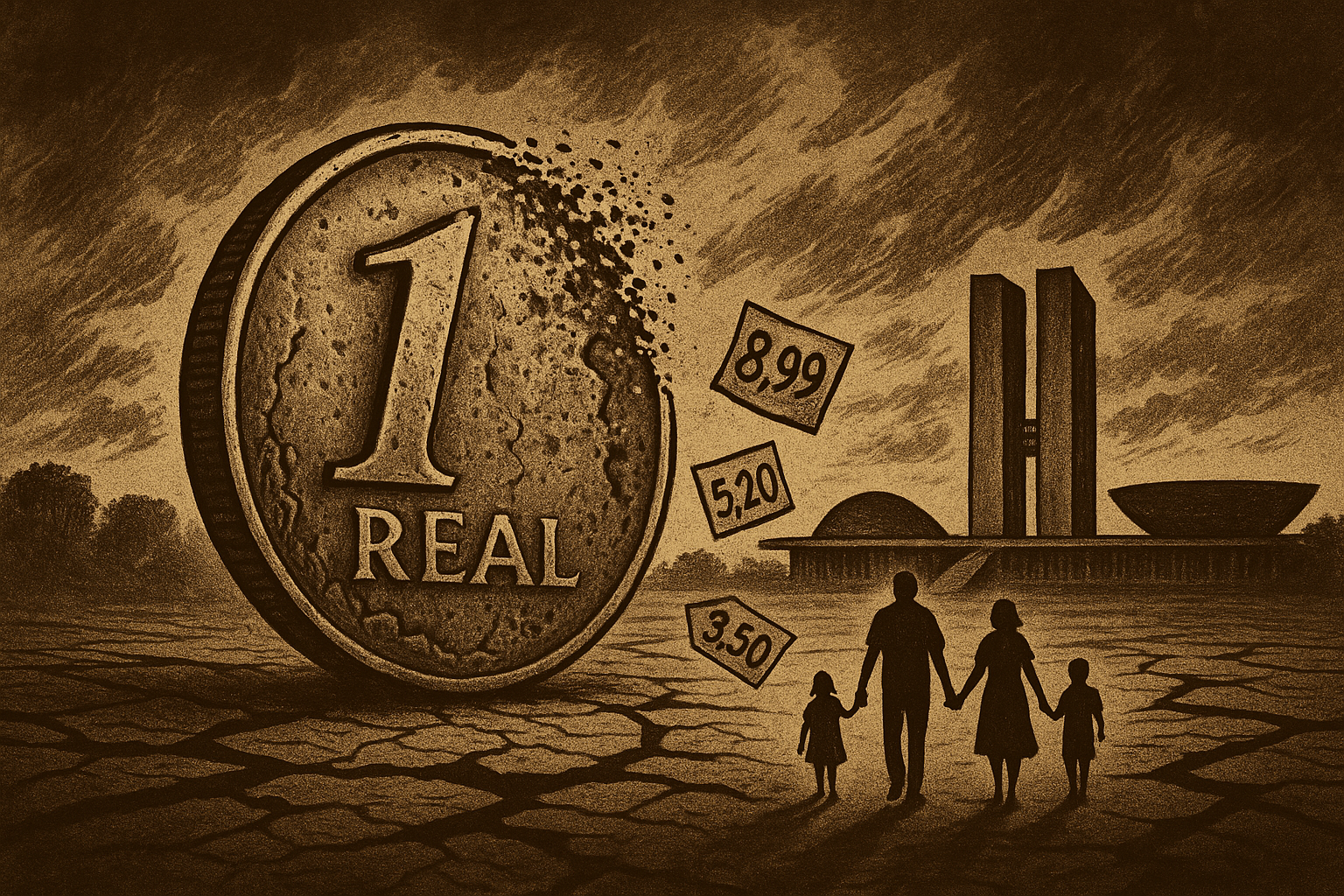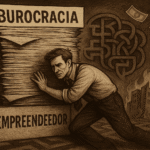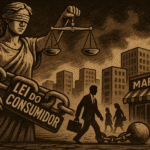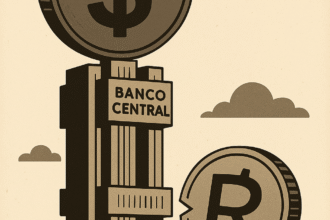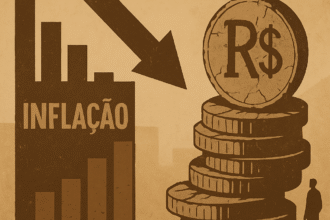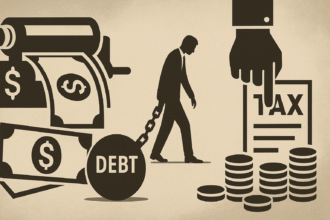Launched on July 1, 1994 as a symbol of stability, the real was presented to Brazilians as a definitive solution to hyperinflation. In practice, the Real Plan brought immediate relief, but its promise of lasting value proved illusory. Thirty years later, the currency has lost more than 80% of your purchase price against the dollar and more than 700% in relation to accumulated inflation. The real has become a currency that exists in name but not in substance: an accounting reference corroded by inflation, devalued in the exchange rate and disconnected from the reality of the population.
Before continuing, it is worth remembering two central points already covered here on the blog: how inflation works as an invisible tax that transfers wealth from the worker to the State, and as the Central Bank, even with promise of independence, remains vulnerable to political pressure.
In this article, we analyze how we arrived at this situation — and why the real, far from representing stability, has come to symbolize the chronic failure of Brazilian monetary policy.
The promising beginning — and the myth of stability
The creation of the real was a historic milestone. After decades of hyperinflation, freezes, price controls and economic failures, the Plano Real initially managed to stabilize prices. The new currency was launched with a parity with the dollar — R$ 1 was worth US$ 1 in 1994 — and a speech of fiscal seriousness.
But this stability was fragile and dependent on a tripod that the State itself would sabotage in the following years: fiscal responsibility —, the government is committed to balancing revenues and expenses, avoiding deficits that put pressure on inflation; realistic inflation targets — it is about establishing clear objectives for price control, anchoring expectations and protecting purchasing power; and truly floating exchange rate — a system in which the value of the currency is defined by the market, without political manipulations that generate distortions. Excessive spending, the expansion of subsidies, the politicization of the Central Bank and the use of inflation as an adjustment tool have progressively dismantled the credibility of the currency.
Inflation eats the real from the inside
According to a survey by the website Poder360, the accumulated inflation since the launch of the real, measured by the IPCA, has reached impressive 708% until May 2024. This means that R$ 100 in 1994 is equivalent to about R$ 808 today, in nominal terms. In the words of the report itself: “Over these three decades, the Brazilian currency has lost 83% of its value against the dollar. A clear sign of the wear and tear suffered by fragile economic policies, persistent fiscal deficits and inflationary cycles that erode the purchasing power of workers.” (Poder360 – Real lost 83% of value against the dollar in 30 years)
Worse still, Brazilian inflation hits essential items hardest — food, transportation and housing — which means that the cost of living for the average citizen has increased much more than the statistics suggest.
This scenario is made worse when we consider the stagnation of average income. According to data from the Continuous National Household Sample Survey (PNAD Contínua), the real income of Brazilian workers has remained practically frozen over the last decade, which implies a silent but continuous loss of quality of life.
Exchange rate: from parity to humiliation
The real was born with a dangerous illusion: that it could become equivalent to the dollar. Since then, its trajectory has been one of decline. In 2024, the Brazilian currency reached a price of R$ 5.91 per dollar, the highest nominal level in history, according to an article by The Globe. But this record was quickly surpassed: on the day December 25, 2024, the real reached its worst price in history, reaching R$ 6.73 per dollar. This value not only surpassed the peaks of previous crises, but also consolidated the collapse of the country's fiscal and monetary credibility. The Brazilian currency, once presented as a symbol of stability, became a reference of exchange rate weakness in the eyes of the world.
The fall in the value of the Brazilian currency reflects not only macroeconomic imbalances, but the global perception of risk: investors see Brazil as an unstable, fiscally irresponsible and politically unpredictable country.
This devaluation has direct effects on everyday life: it makes imports more expensive, puts pressure on the prices of food, fuel and industrial inputs, further fueling domestic inflation.
The silent farce of the IPCA
The IPCA, the official inflation index, is often used to show that “inflation is under control.” But the everyday experience of Brazilians belies this narrative.
According to an analysis of the Investing.com, even when the IPCA indicates apparently modest variations, the accumulated price increase in essential goods is brutal. A survey by the platform shows that, between 1994 and 2023, the real lost more than 85% of its purchasing power in food and housing, with some items rising over 1.000%.
This disconnect between official indices and consumer reality is part of the farce: manipulating expectations to protect monetary policy, while the currency weakens and wages lag behind.
Currency as a tool of domination
The continued devaluation of the real is not just a technical failure — it is a political choice. The Brazilian state, unable to contain its own spending, systematically resorts to inflation as a way to finance deficits and postpone reforms.
This practice transfers wealth from the poorest to the center of power: while citizens lose value in their salaries and savings, the government gains room to spend without officially collecting more taxes.
This is a “hidden tax,” as economists from the Austrian School, such as Ludwig von Mises and Friedrich Hayek, have already denounced. Inflation is not a natural phenomenon — it is a form of coercive resource extraction, promoted by a politically controlled monetary system.
The real has lost its name and meaning
The name “real” carries irony. It is intended to evoke solidity, trust, something tangible. But today, the real is a fictitious accounting unit: its value is determined not by the productivity of the economy, but by the political will of Brasília.
A study of the Getulio Vargas Foundation (FGV) pointed out that, to maintain the currency's purchasing power at 1994 levels, the Brazilian minimum wage would need to be close to R$3,000 — more than double the current value.
This disparity between the value of the currency and the reality of income reveals the depth of the problem: we are dealing with a structural devaluation, not a cyclical one. And monetary policy has not been able (or has not wanted) to reverse this situation.
The myth of the “independent” Central Bank
Much has been said about the formal independence of the Central Bank approved in 2021. But, in practice, monetary policy remains subject to political pressure.
The recent attempt to discredit the Monetary Policy Committee (Copom), combined with the instability in inflation targets and appointments aligned with government interests, shows that independence is more apparent than real.
Without real autonomy, the Central Bank becomes a short-term instrument to contain political crises — not a guardian of currency stability.
How Brazilians react: flight to the dollar, bitcoin and real estate
Faced with the loss of confidence in the real, Brazilians are looking for alternatives to preserve value. Demand for cash dollars has increased, brokerages are registering high demand for international ETFs, and investing in cryptocurrencies and real estate has become an escape valve.
According to Bloomberg Line, in 2023 the number of Brazilians with investment accounts abroad grew by more than 200%. The search for protection is legitimate — and reveals the failure of economic policy to offer a reliable currency.
Conclusion: the real as a portrait of political Brazil
The real did not fail on its own. It is merely a reflection of a state that does not want to cut spending, is unable to reform its institutions and prefers to transfer its costs to the population via inflation.
As long as there is no real fiscal responsibility, credible inflation targets and technical autonomy in monetary decisions, the real will continue to be a weak currency — an accounting fiction that reminds us, daily, that we are paying the price of political mismanagement.
Brazil needs a monetary reform that goes beyond index manipulation. It is time to reconnect the value of the currency to freedom, responsibility and production — not to fiscal populism and inflationary manipulation.
📩 Want to understand how the real affects your pocket — and how to protect your purchasing power?
Subscribe to the newsletter Economic Radar and receive weekly analyses on inflation, exchange rates and monetary freedom.
Read also: The inflation cycle: from printing to impoverishment and Is the Central Bank really independent?
🔗 References:
- Poder360 – Real lost 83% of value against the dollar in 30 years
- ValutaFX – USD/BRL exchange rate history 2024
- O Globo – Dollar goes to R$ 5.91 after government announcement
- Investing.com – Accumulated inflation destroys purchasing power
- Bloomberg Línea – Brazilians seek to invest abroad to protect themselves from devaluation
